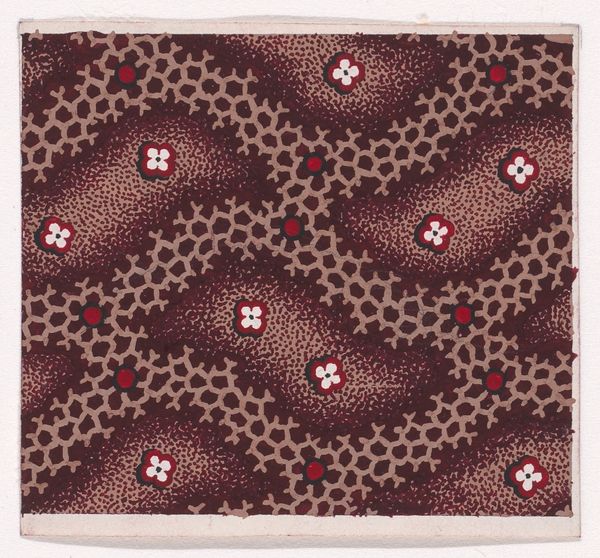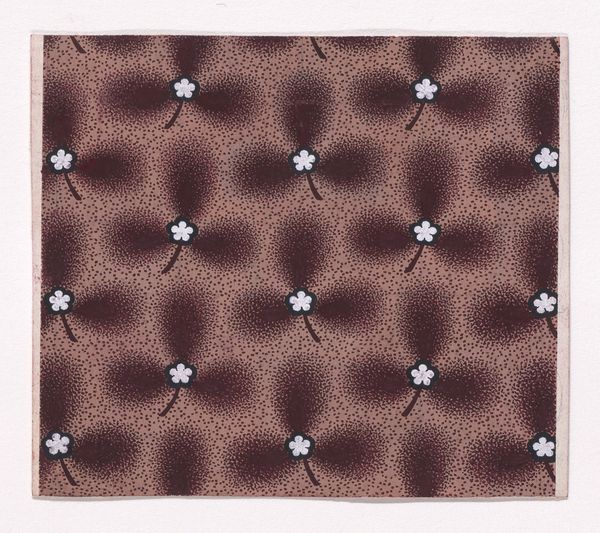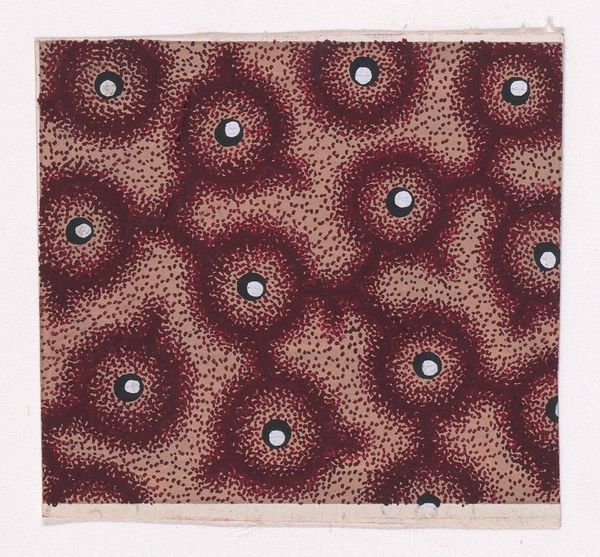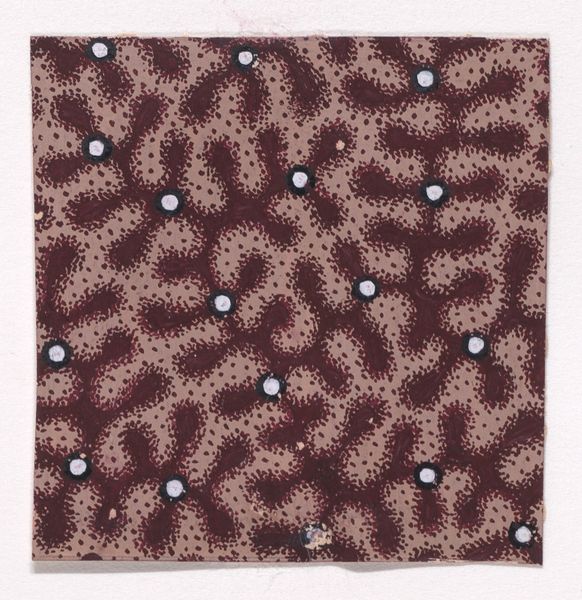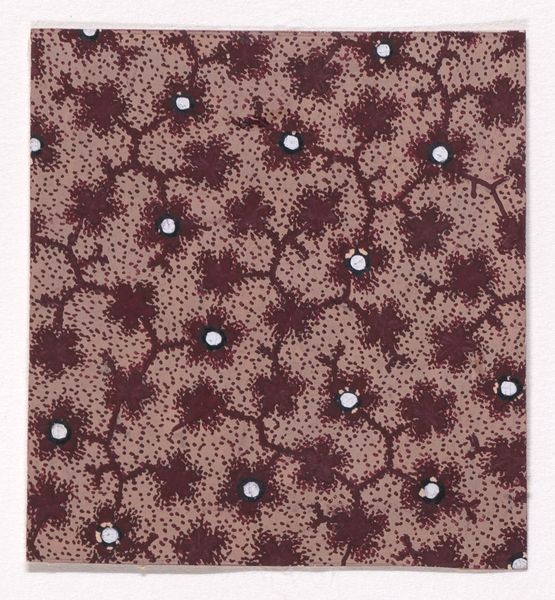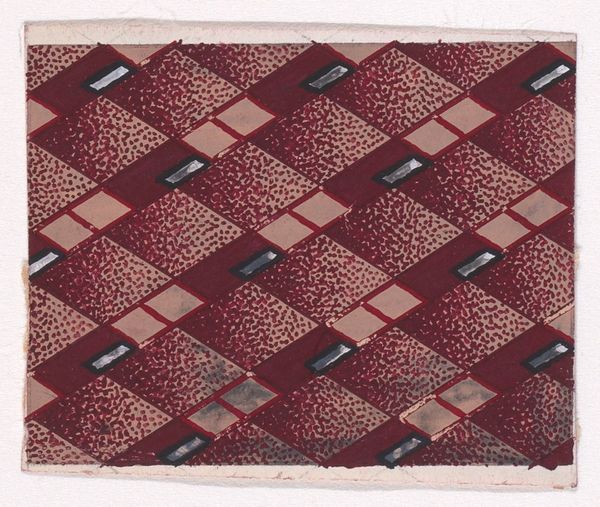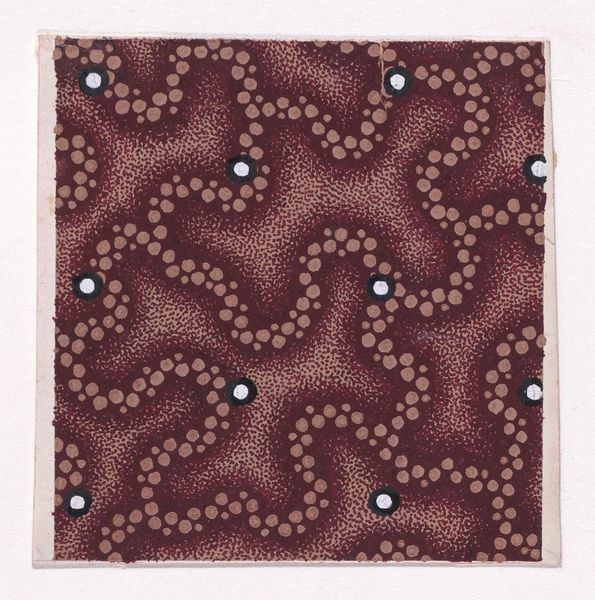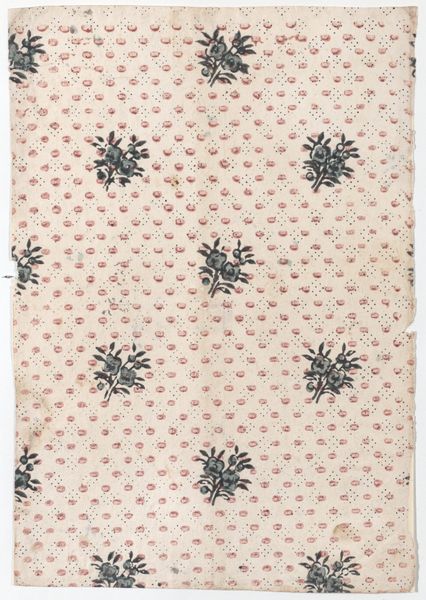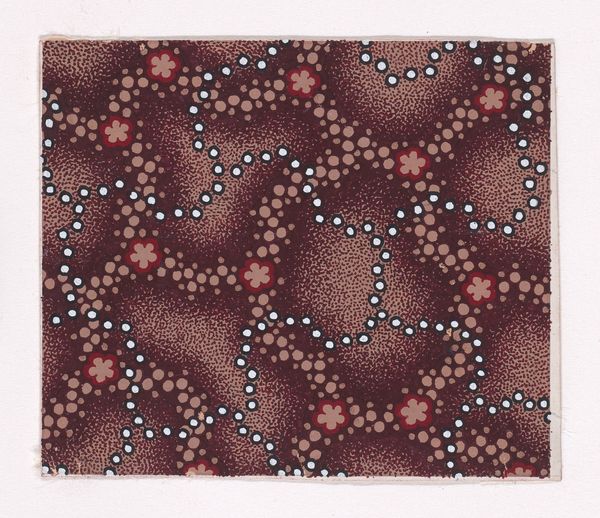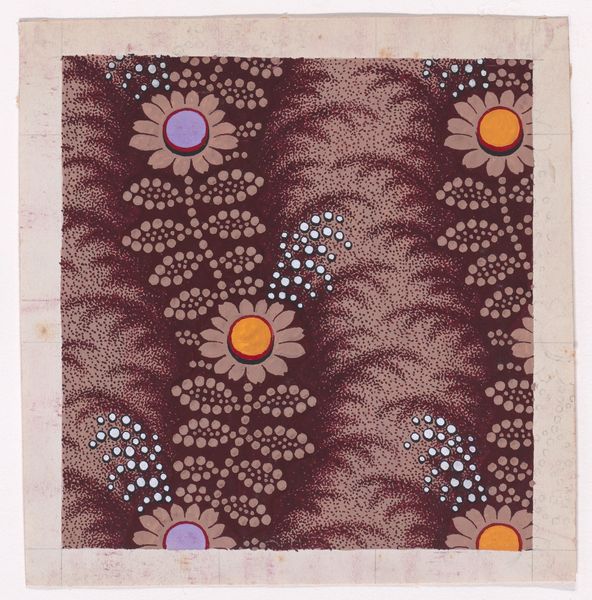
drawing, print, textile
#
drawing
#
natural stone pattern
#
naturalistic pattern
#
organic
# print
#
pattern
#
textile
#
fashion and textile design
#
hand-embroidered
#
organic pattern
#
repetition of pattern
#
pattern repetition
#
textile design
#
decorative-art
#
imprinted textile
#
layered pattern
Dimensions: Sheet: 1 13/16 in. × 2 in. (4.6 × 5.1 cm)
Copyright: Public Domain
Curator: Before us is a textile design dating to around 1840. Its full title is "Textile Design with Scrolling Branches and Pearls," and it's currently housed at the Metropolitan Museum of Art. Editor: My first thought is of understated elegance. The muted tones create a serene backdrop for the repeating motifs. It almost feels like a miniature garden seen from above. Curator: The choice of medium and pattern is interesting here, considering its potential use. The delicate scrolling branches suggest an attempt to evoke luxury, perhaps imitating hand-embroidered textiles accessible only to elite women. I wonder about the working conditions of the laborers producing this pattern and who ultimately wore the fabrics made from designs like this. Editor: It's visually quite clever; the strategic placement of those pearl-like elements creates focal points and disrupts the potential monotony of a repeating branch pattern. They lend depth. I keep wondering how light would interact with the actual fabric – those dots are almost three-dimensional on the page. Curator: I’d be curious to research what contemporary dyers used to get that precise shade of brownish-red. It speaks to me of class and access. What raw materials, what forms of expertise were necessary for designs such as this to make it to the printing block. Editor: Absolutely. I do wonder if the design restrictions may also force creativity through limited materials. Either way, I find how the branches interlock is fascinating. There is no real start or end, which is really neat! Curator: Seeing a design like this, divorced from its actual manifestation in cloth, allows us to consider the whole industry around textile production. In a sense, we could say it exemplifies 19th century capitalism at its finest! Editor: For me, focusing on composition and pattern makes it visually engaging even now. It's really incredible to look closely at the lines and layers used to give it its complex and unique decorative impact. Curator: Indeed. Reflecting on it, perhaps this design encourages us to view the artistry within mass production with different eyes. Editor: Agreed. Examining the surface and the underlying structure does invite contemplation on the whole system in turn.
Comments
No comments
Be the first to comment and join the conversation on the ultimate creative platform.
